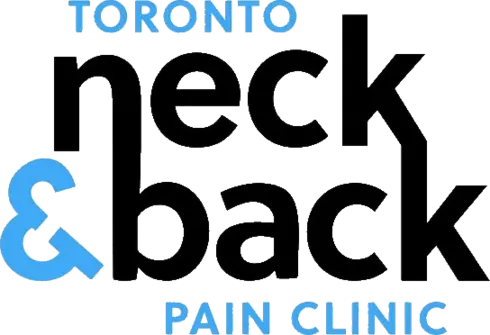If you’ve ever twisted your neck or leaned back in a chair until your back “popped,” you know the temporary sense of relief self-cracking brings. Many people do it without thinking, hoping to release tension or stop stiffness.
But here’s the truth: self-cracking is not the same as a chiropractic adjustment. In fact, it can sometimes do more harm than good.
In this post, we’ll explore why that “pop” you get from cracking your own spine isn’t fixing the real problem, what actually happens during a professional adjustment, and how chiropractic care can provide lasting relief without the risks.
Why People Crack Their Own Necks and Backs
Most people don’t self-crack because it’s fun — they do it because something feels “stuck.” Common reasons include:
- Tension relief — The pop feels like pressure being released.
- Stiffness — People instinctively try to loosen up tight joints or muscles.
- Habit — For some, it becomes a repetitive behavior, like biting nails or tapping feet.
The temporary relief of self-cracking can be misleading, though — and here’s why.
What Actually Happens When You Crack Yourself
That popping sound? It’s called cavitation. Gas bubbles inside the joint fluid collapse and release, producing the noise.
But here’s the problem:
- Self-cracking doesn’t target the stuck joints causing your discomfort.
- Instead, it can loosen the joints that are already moving too much.
- Over time, this can create instability and potentially make your pain worse.
It’s like loosening the hinges on the wrong door in your house while the real jammed door stays stuck.
The Risks of Self-Cracking
While most people don’t seriously injure themselves right away, repeated self-cracking can lead to:
- Joint instability: Overstretching ligaments makes the spine less stable.
- Increased stiffness: The stuck joints stay stuck, creating more imbalance.
- Higher risk of injury: Especially in the neck, where nerves and blood vessels are delicate.
- Masking deeper issues: You might feel relief, but the root cause (like a disc problem or joint dysfunction) is still there.
That’s why chiropractors often see patients who have been cracking their own necks or backs for years — but still struggle with pain, headaches, or stiffness.
What Makes a Chiropractic Adjustment Different
A chiropractic adjustment is precise, safe, and designed to correct the exact problem joints causing your discomfort.
Here’s how it’s different from self-cracking:
- Assessment first — Chiropractors use exams, history, and sometimes imaging to find which joints are restricted.
- Targeted adjustments — The adjustment is delivered to the specific area that isn’t moving, restoring normal function.
- Controlled force — Gentle, specific force is applied — not the twisting and jerking people often do on their own.
- Holistic care — Adjustments are combined with advice on posture, stretching, and strengthening to support long-term results.
Think of it like the difference between randomly hammering nails into a wall and a skilled carpenter repairing the exact hinge that needs fixing.
Benefits of Professional Chiropractic Adjustments
Research and patient experience consistently show that chiropractic care offers real advantages over self-cracking:
- Pain relief: Targeting the real issue, not just creating a temporary sensation.
- Improved mobility: Joints move freely without overstretching others.
- Better nerve function: Reducing irritation on nerves can relieve pain that radiates into the arms, legs, or head.
- Fewer flare-ups: Correcting the cause reduces the cycle of stiffness and self-cracking habits.
- Overall wellness: Many patients notice better posture, sleep, and energy.
What to Expect at Your First Chiropractic Visit
If you’ve been relying on self-cracking but still feel sore, here’s what happens when you see a chiropractor:
- Consultation — You’ll share your symptoms, history, and what you’ve tried so far.
- Exam — The chiropractor checks your posture, range of motion, and spinal function.
- Adjustments — Gentle, specific corrections restore movement where it’s needed.
- Self-care guidance — You’ll learn safe stretches and habits to support your progress.
Most patients say an adjustment feels relieving, not painful — and far more effective than twisting on their own.
Real Stories from Patients
- “I used to crack my neck constantly, but the stiffness always came back. After chiropractic care, I don’t even feel the need to crack it anymore — the relief lasts.”
- “I thought I was helping myself, but my back actually got worse over time. My chiropractor explained why and fixed the problem. Now I wake up without pain.”
- “I was worried chiropractic would mean a long-term plan, but they worked with me for short-term relief first. It was exactly what I needed.”
Why Choosing the Right Chiropractor Matters

Dr. David Koivuranta at the Toronto Neck and Back Pain Clinic, Yonge and Davisville.
Not all chiropractors take the same approach. At our Toronto clinic, we focus on:
- Safe, gentle care tailored to your comfort.
- Short-term relief without pressure for unnecessary long-term plans.
- Affordable, mainstream treatment trusted by thousands of patients.
- Personalized attention so you get the care that’s right for you.
When to See a Chiropractor
If you:
- Crack your own neck or back frequently
- Still feel stiff, sore, or in pain afterward
- Experience headaches, tingling, or pain radiating into arms or legs
- Want a safer, more effective alternative
…it’s time to get help.
Final Thoughts: Ditch the Habit, Find Real Relief
Cracking your own neck or back might feel good for a moment, but it doesn’t solve the problem. Chiropractic care goes beyond the “pop” to correct the real issues, restore function, and help you feel good for the long term.
If you’re tired of chasing temporary relief, the next step is simple.






